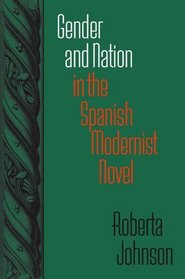Search -
Gender and Nation in the Spanish Modernist Novel
Gender and Nation in the Spanish Modernist Novel
Author:
Offering a fresh, revisionist analysis of Spanish fiction from 1900 to 1940, this study examines the work of both men and women writers and how they practiced differing forms of modernism. As Roberta Johnson notes, Spanish male novelists emphasized technical and verbal innovation in representing the contents of an individual consciousness and th... more »
Author:
Offering a fresh, revisionist analysis of Spanish fiction from 1900 to 1940, this study examines the work of both men and women writers and how they practiced differing forms of modernism. As Roberta Johnson notes, Spanish male novelists emphasized technical and verbal innovation in representing the contents of an individual consciousness and th... more »
ISBN-13: 9780826514363
ISBN-10: 0826514367
Publication Date: 12/12/2003
Pages: 368
Edition: 1
Rating: ?
ISBN-10: 0826514367
Publication Date: 12/12/2003
Pages: 368
Edition: 1
Rating: ?
0 stars, based on 0 rating
Publisher: Vanderbilt University Press
Book Type: Library Binding
Other Versions: Paperback
Members Wishing: 0
Reviews: Amazon | Write a Review
Book Type: Library Binding
Other Versions: Paperback
Members Wishing: 0
Reviews: Amazon | Write a Review




